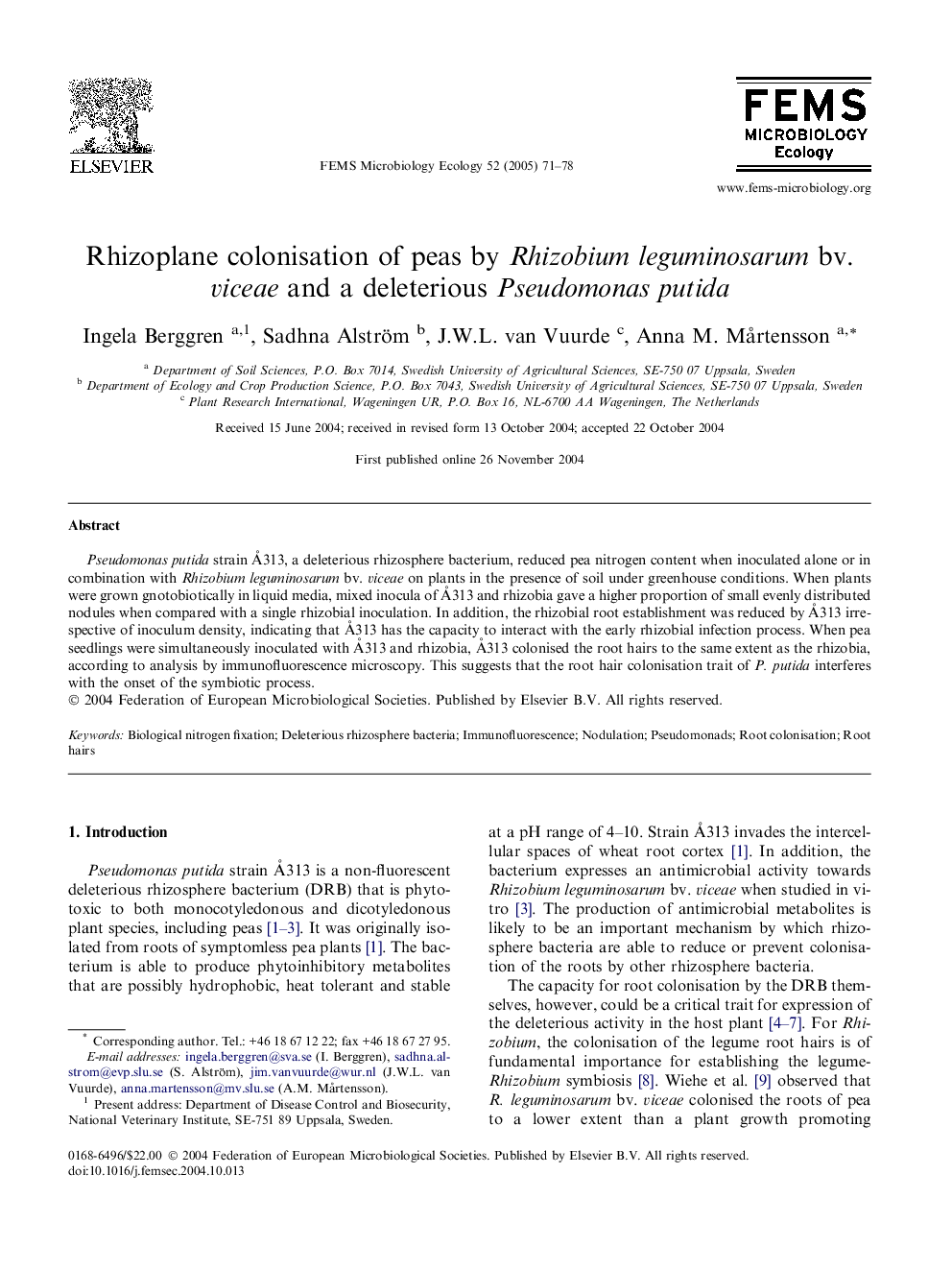| Article ID | Journal | Published Year | Pages | File Type |
|---|---|---|---|---|
| 9437755 | FEMS Microbiology Ecology | 2005 | 8 Pages |
Abstract
Pseudomonas putida strain Ã
313, a deleterious rhizosphere bacterium, reduced pea nitrogen content when inoculated alone or in combination with Rhizobium leguminosarum bv. viceae on plants in the presence of soil under greenhouse conditions. When plants were grown gnotobiotically in liquid media, mixed inocula of Ã
313 and rhizobia gave a higher proportion of small evenly distributed nodules when compared with a single rhizobial inoculation. In addition, the rhizobial root establishment was reduced by Ã
313 irrespective of inoculum density, indicating that Ã
313 has the capacity to interact with the early rhizobial infection process. When pea seedlings were simultaneously inoculated with Ã
313 and rhizobia, Ã
313 colonised the root hairs to the same extent as the rhizobia, according to analysis by immunofluorescence microscopy. This suggests that the root hair colonisation trait of P. putida interferes with the onset of the symbiotic process.
Keywords
Related Topics
Life Sciences
Environmental Science
Ecology
Authors
Ingela Berggren, Sadhna Alström, J.W.L. van Vuurde, Anna M. MÃ¥rtensson,
